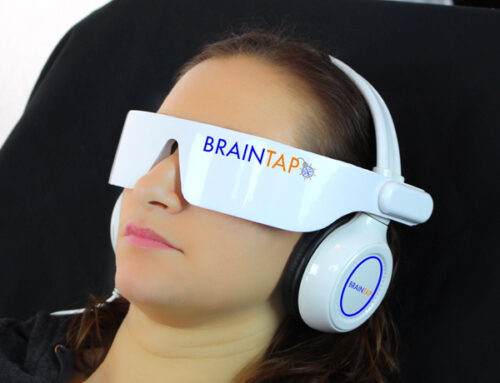TIRED? LOW ENERGY? 4 HOME TESTS TO CHECK FOR ADRENAL FATIGUE
Your adrenal function is crucial to help us adjust to stress and repair. When the adrenals glands are out of balance, it affects our energy, sleep, mental concentration, and hormonal system. Overtime, we can acquire a condition called adrenal fatigue which causes our adrenal glands to not be able to keep up with the needs of our environment.
Below are 4 Do-It-Yourself adrenal fatigue tests you can do at home and suggestions you can do to feel less tired and have more energy again. If one or more of these tests indicate that you suffer from adrenal fatigue, let’s discuss together your choices from this list below:
- Getting a saliva or blood test to confirm these findings
- Start managing your stress by eliminating what is causing it
- Add supplements to boost your adrenal system which we can recommend
Adrenal stress TEST# 1: postural hypotension test
Drink 8 ounces of water about 1/2 hour before this test so you are hydrated. Put your arm in a blood pressure cuff, lie down and rest for five minutes.
Then, stand up immediately and take your blood pressure again. Your systolic (first) number should have increased by 10 to 20 points, if it fell (especially by 10 or more points), Adrenal Fatigue is highly a possibility. When we stand, epinephrine is normally produced to raise the blood pressure to overcome gravity and pump blood towards the heart.
ADRENAL STRESS TEST #2 – IRIS/PUPIL CONTRACTION TEST
Darken the room and shine a flashlight or use a penlight across one eye (not directly into the eye) and watch what happens in a mirror.
Under normal conditions the pupil will immediately contract and will stay contracted for about 20 seconds. But, if your adrenal glands are exhausted, the pupil can’t hold the contraction and will waver between contracted and dilated.
It is also possible the pupil will initially contract and then dilate within 2 minutes regardless of the light shining on it. The dilation will last for 30-45 seconds before it contracts again.
It may be a good idea to retest this monthly as an indicator of improvement as over time, the pupil should hold the contraction longer. The failure of the pupil to remain contracted is more typically present in moderate to severe cases of Adrenal Fatigue.
ADRENAL STRESS TEST #3 – SERGENT’S WHITE LINE
This 3rd test was first described by a French doctor by the name of Emile Sergent in 1917 and is a simple test for poor adrenal function. To do this test take a fork or the dull end of a pen and lightly scratch the inner surface of your forearm on one side to create a mark of about 6 inches long. Normally, the mark will be initially white and reddens within 15-20 seconds. If the line is still white after 20-30 seconds it indicates adrenal fatigue but is only positive in about 40% of those with adrenal fatigue. However, if your test is positive it is a dependable indication of Adrenal Fatigue.
ADRENAL STRESS TEST #4: WAIST/HIP RATIO
Chronic periods of stress cause elevated cortisol levels, triggering body fat increase around the entire abdomen. The toughest weight to lose is this fat around your midsection or what is considered your “spare tire” until your exhausted adrenal glands are healed.
One of the best indicators to test body type is the waist/hip ratio which is a comparison of the circumference of belly fat compared to that of hip fat. In addition, waist/hip ratio is highly accurate at predicting adrenal fatigue, heart disease, diabetes, and metabolic breakdown.
How to Measure Waist/Hip Ratio
Waist Circumference: Using a tape measure, measure your waist at the widest point, near the belly button.
Hip Circumference: Placing your feet together and arms by your sides, measure at the highest circumference of the hips and gluteus muscle. The tape measure needs to be parallel, have continuous tension and not change the skin.
This ratio is then computed by the waist measurement divided by the hip measurement.
Waist ÷ Hip = Waist/Hip Ratio
The World Health Organization says that abdominal obesity is characterized as a waist–hip ratio exceeding 0.90 for males and 0.85 for females.
What To Do If You Think You Have Adrenal Fatigue?
There are a few ways of assessing adrenal gland function using Laboratory testing, such as a Blood or Salivary test. Of the two, the more popular is the Adrenal Salivary Test.
The protocol for an Adrenal Salivary Test is to take four salivary samples throughout the day to be tested for salivary cortisol and DHEA.
The first thing to do to boost adrenal health is to stop or remove the sources of stress. It could be emotional, an infection, lack of sleep, too much exercise, food allergies, etc.
Some supplements for us to consider may include synergistic blends of:
Adaptogenic herbs, Licorice root, Phosphytidylserine, Vitamin B Complex, Multivitamin, Hydrolyzed Collagen, Proline, Adrenal glandulars, Cordyceps, Pregnenolone, Vitamin C, 5-HTP, Digestive Enzymes, Magnesium, GABA, DHEA, 7-Keto DHEA, MSM, Essential Fatty Acids,etc.
Consider reading this book called Adrenal Fatigue by Dr. James Wilson.
Let us know how we can help you navigate healing your adrenal fatigue issues. Give our office a call and set up a complementary 15 minute appointment.
In a short time, you will have more energy and be able to face each day with less stress and more vitality and vigor!!
In Health,
Iris Rosenfeld, DC
23121 Plaza Pointe Dr Suite 150
Laguna Hills, Ca 92653
949-380-7215





